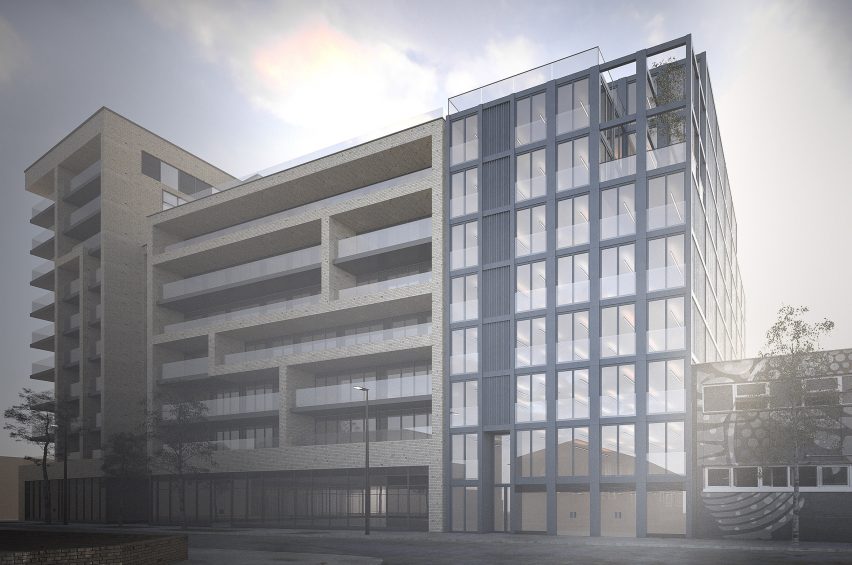Patalab Architecture has won approval to build a nine-storey office block from shipping containers, which will be the world's tallest building made from the modular structures.
When built, the office block in Whitechapel, east London, will be 26-metres-high plus a lift overrun. This will make it taller than the Freitag Store in Zurich – the current tallest building made from shipping containers.
London studio Patalab Architecture choose to design the building from reused shipping containers for both practical and aesthetic reasons.
"On the one hand this construction is a very economic way, with offsite modular manufacturing and a considerably shorter time on site," said Uwe Schmidt-Hess, founder of Patalab Architecture.
"On the other it is the aesthetic quality of the shipping containers that we feel responds well to the brief," he told Dezeen.
The containers will be stacked nine high, with a steel frame providing additional structural support. On the exterior the containers will be fully clad and glass balconies will be placed on the street facade.
Inside the block, the containers will be cut to create open-plan office spaces. Each floor will have corridors lined with corrugated metal that will be coloured based on the design schemes used by freight companies to paint shipping containers.
Patalab Architecture believes that the office block will advance container architecture, moving it from being associated with temporary and "meanwhile" use to more permanent structures.
"First of all it is taller than any container building before. This means structural arrangements had to be considered carefully," said Schmidt-Hess. "I am convinced we will see more shipping container buildings as the economic case is very strong."
As a condition of the planning consent the building is required to meet a sustainability standard of BREEAM excellent. To achieve this, along with the largely recycled structure, the building will have solar panels on the roof.
"We pushed the sustainability aspect by providing a highly insulated envelope and integration of renewables, achieving BREEAM excellent rating," added Schmidt-Hess.
Shipping containers have been used as the structure to create numerous cafes and offices. Last year Kengo Kuma created a drive-through for Starbucks in Taiwan from the stackable containers, while Julius Taminiau created a space for startups in Amsterdam.
Other inventive uses for shipping containers include Neubau, which created a porters' lodge at a Cambridge University college and JBAD that turned a container into a parking attendant booth in Ohio.
Project credits:
Client: The Estate Office Shoreditch
Planning consultant: Barton Willmore
Sustainability consultant: Eight Associates
Services engineer: Ingine
Contractor: Urban space management / container city projects

